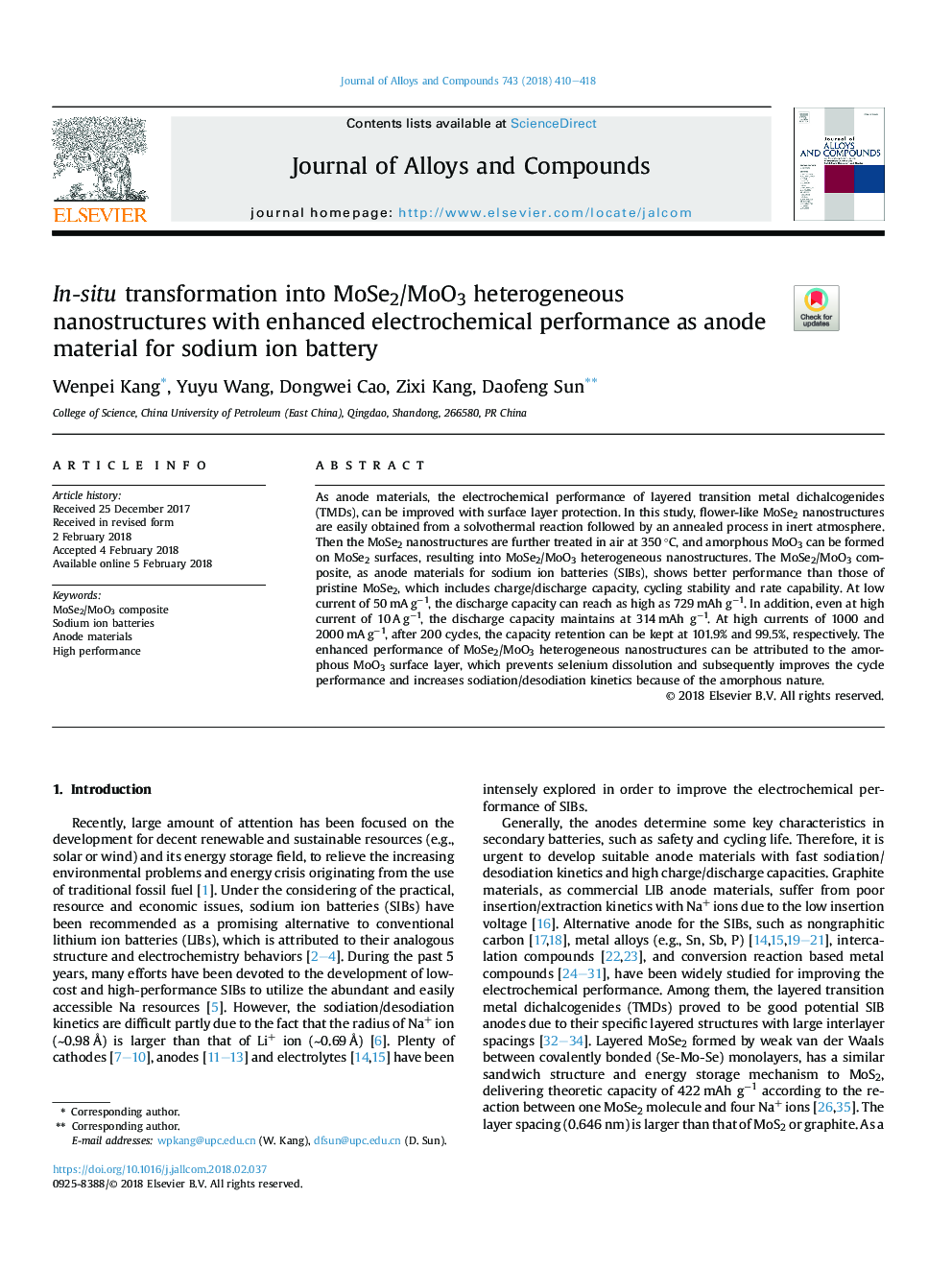| Article ID | Journal | Published Year | Pages | File Type |
|---|---|---|---|---|
| 7993240 | Journal of Alloys and Compounds | 2018 | 9 Pages |
Abstract
As anode materials, the electrochemical performance of layered transition metal dichalcogenides (TMDs), can be improved with surface layer protection. In this study, flower-like MoSe2 nanostructures are easily obtained from a solvothermal reaction followed by an annealed process in inert atmosphere. Then the MoSe2 nanostructures are further treated in air at 350â¯Â°C, and amorphous MoO3 can be formed on MoSe2 surfaces, resulting into MoSe2/MoO3 heterogeneous nanostructures. The MoSe2/MoO3 composite, as anode materials for sodium ion batteries (SIBs), shows better performance than those of pristine MoSe2, which includes charge/discharge capacity, cycling stability and rate capability. At low current of 50â¯mAâ¯gâ1, the discharge capacity can reach as high as 729â¯mAh gâ1. In addition, even at high current of 10â¯Aâ¯gâ1, the discharge capacity maintains at 314â¯mAh gâ1. At high currents of 1000 and 2000â¯mAâ¯gâ1, after 200 cycles, the capacity retention can be kept at 101.9% and 99.5%, respectively. The enhanced performance of MoSe2/MoO3 heterogeneous nanostructures can be attributed to the amorphous MoO3 surface layer, which prevents selenium dissolution and subsequently improves the cycle performance and increases sodiation/desodiation kinetics because of the amorphous nature.
Related Topics
Physical Sciences and Engineering
Materials Science
Metals and Alloys
Authors
Wenpei Kang, Yuyu Wang, Dongwei Cao, Zixi Kang, Daofeng Sun,
